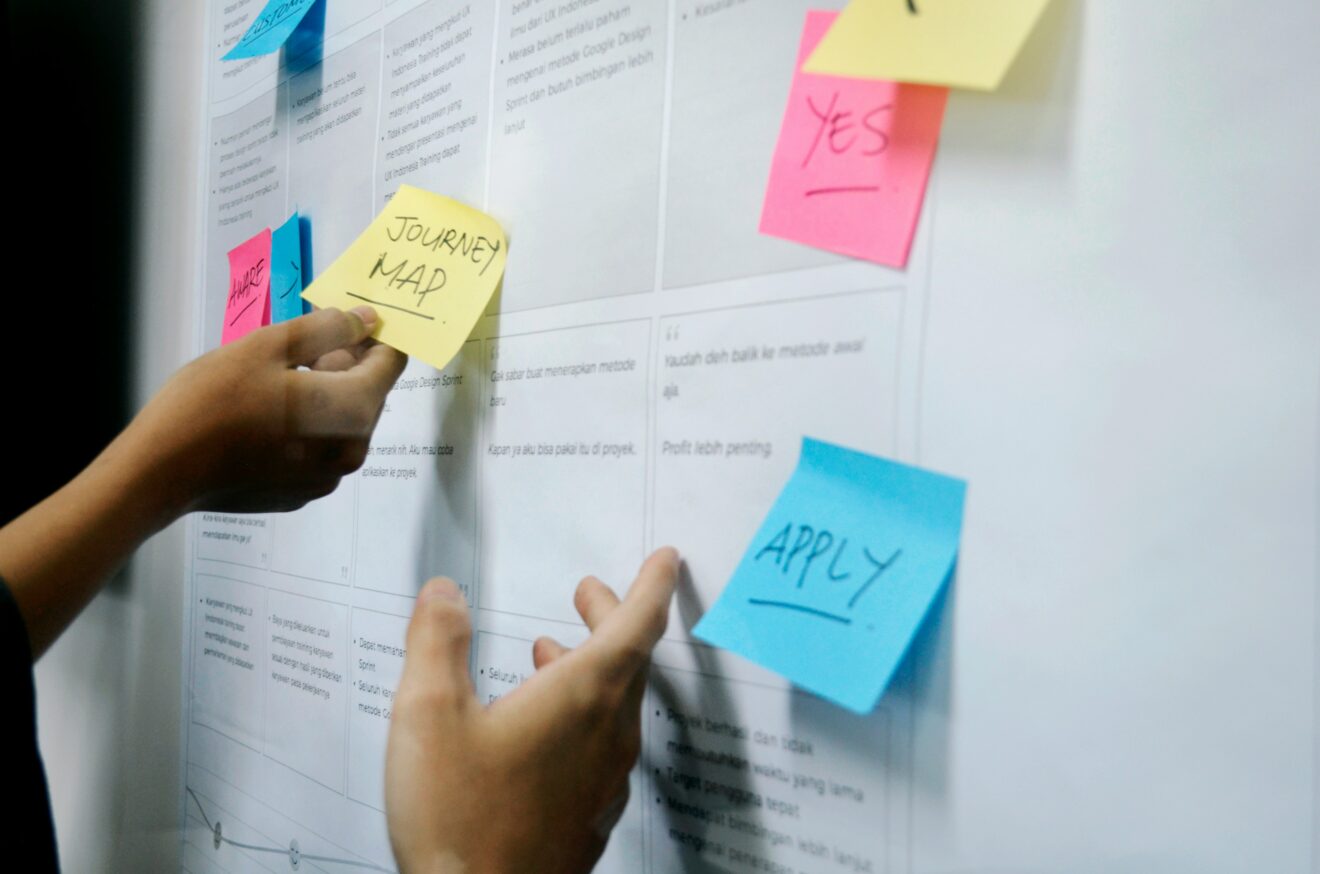When you gather a group of people to learn about service design, inevitably, there will always be people in the group who think that you are talking about customer service. They may also question why they are there since their role in the company is not related to customer service. It is generally the word “service” that is where the confusion is located. As more and more people learn about service design this confusion will dissipate.
Both customer service and service design deal with customer experiences and services, but they are fundamentally different. While customer service is a reactive function that helps customers solve problems related to the product or service they have purchased (or want to purchase), service design is a proactive business development approach that creates well-functioning services, reducing the need for customer service in the first place.
More specifically, Birgit Mager, Professor of service design and President and co-founder of the Service Design Network, states that when services are designed correctly, they balance customer and user needs with organisational needs (Stickdorn et al, 2011). While Stickdorn et al, 2018, discuss service design’s confusion with customer service and state that “[S]ervice designers do not (only) solve customer problems, they design value propositions, processes, and business models.” When this is done both the customer’s expectations are met or exceeded, and the organisation makes a high-quality service that they can deliver. This, in turn, reduces the need for contacting an organisation’s customer service.
The cost of unsatisfied customers
Customer service is an essential function in every business to help customers to fix issues, find answers, and learn how to use a feature, the product, or service. A fun example of proactive customer “Butterball® Turkey Talk-Line”. Every Thanksgiving and Christmas holiday season, for their US customers, Butterball provides a helpline for customers struggling with cooking their turkeys. This is because turkey is the main protein for many traditional Thanksgiving and Christmas dinners, but they can be notoriously difficult to cook well. This initiative helps their customers, but it also helps the Butterball company to manage the demand on both financial and human resources in advance.
However, the reality is that customer service is fundamentally a cost centre because it exists address problems that occur either during or after the purchase of the product or service. When services are designed well in the first place, and they are made in a way that the customers find them useful, useable and desirable, fewer issues arise, reducing the need for customer service. Therefore, the company is able to save money while still improving customer satisfaction.
This does not mean that service design is also not a cost for companies, because it is. Service design also creates value in two financially measurable ways in addition to other, harder to measure, ways.
How service design saves money
Some elements of a business cost money but do not produce revenue themselves. We saw the customer service example above. Mager says that for businesses to be truly successful, they need to be able to balance customer needs with organisational needs (Stickdorn et al, 2011). Service design makes the customer’s initial experience with the service or product better with the intention that fewer and fewer people need to reach out to the customer service team for answers. This is achieved by making sure that long before the service is deployed or developed, it goes through a rigorous process of research the users’ needs, ideation, prototyping and testing. This process ensures that before a service is in use, it has already been verified as useful, usable, and desirable. By meeting the needs of the users in a way that they expect and value, the outcome is less likely to create frustration, confusion, or a need for a refund.
Case study : City of Helsinki Early Childhood Education Division
Before 2023, the City of Helsinki’s Early Childhood Education division received roughly 6000 calls each year from parents who were not sure how to navigate the website and register their child for daycare. These 6000 calls took valuable time from employees whose primary job wasn’t answering phones. It is important to note that almost all early childhood education facilities are run by the municipality where they are located. Even the few private ones, are regulated by the municipal government.
Using service design, the city:
- conducted deep research with parents, daycare staff, and administrative staff at the city
- redesigned and wrote the website content based on the insights gathered
- tested and iterated the new design
Interviews were conducted with diverse groups of parents as well as early childhood education staff to find out what missteps in communication were happening to create a lack of clarity in the content that existed. As often happens, the curse of knowledge (Heath & Heath, 2006) can plague communications when trying to transmit information.
Experts in a given domain often have a hard time communicating with nonexperts. (Walsh, 2022)
The content made sense and was clear to those who made it because their level of expertise in this area was deep. So, once they had all the insights from the non-experts, they could start to re-write the content and re-design how the website was structured and the content that existed. Testing it on parents and iterating when needed. This work was not fast but, in the end, the next time they measured the number of calls that they were getting, it was on pace to reach 500 in the same timeframe as the previous 6000. This was a huge time saver for those whose answering calls.
This is a clear example of how better service design reduces the need for other services to support, turning this into a cost-saving opportunity. Not only will this reduce their costs in the current year, but in years to come. It will also improve productivity.
How service design drives growth
Beyond cost savings, service design can pay for itself by driving company growth in four different ways: optimising, growing, innovation, and shifting. The first three ways are proposed by Marc Fonteijn in his course Selling Service Design with Confidence and other sources he has written (Fonteijn, 2017) using a bucket metaphor:
- helping to make products and services more desirable and accessible (optimising)
- finding new markets for current offering (growing)
- creating new business opportunities (innovation)
- helping traditionally product-focused companies expand into service-based revenue models (shifting)
Service design is used to optimise a product or service more attractive to the user through usefulness, desirability, or accessibility. This can be working on the product or service itself, how you purchase this product, where it is purchased or many other aspects of the current offering. While growing is all about creating new markets for the current services or products on offer. A company or organisation may also want to invest in creating entirely new business opportunities or expanding innovation. Finally, to expand on the work by Fonteijn, adding a way to support a traditionally product-oriented or industrial companies, service design can open entire new business opportunities that may not have been considered before.
One company that uses service design to detect new business opportunities is Starbucks. A short history shows that they launched their mobile app card that allowed online payments in 2011. When doing research into their customer experience, they realised that people not only wanted to be able to pay using the mobile app, but they wanted to be to order in advance so that they did not have to wait in line in the store to make their order. This was a pain point for their customers that they recognised. Thus in 2015, they launched their mobile app where they could order and pay (Starbucks, n.d.). Customers no longer needed to decide whether they could be bothered to wait in line at the store (in-store or drive thru). Reducing the wait time pain point and encouraging more orders. Additionally, this led the company to open the new concepted ‘pick up only’ locations (Walton, 2020).
Another company that has been growing the service-side of their business has been Kone. People will recognise their logo on its hardware, elevators, travelators, escalators, and automatic doors all over the world.
Case Study: Kone Oy
Kone, a Finnish-based global elevator company, have been both innovating and shifting their business for over a decade. They also have a robust design team, service design included which, according to their website, includes roughly 60 employees (kone.com).
Kone has been growing their service business side (from 31% to 41%) in the past 9 years, they have also been growing their modernisation side of the business (from 12% to 19%) in the same timeframe. All this while the new building (their traditional industrial sector) part of their business has been decreasing from 57% in 2015 to 41% in 2024. It is possible that the refurbishment or modernisation business which is currently growing will expand as their and others’ equipment, age.
| Modernisation, % of Sales | Services (Maintenance), % of Sales | New Building, % of Sales | |
|---|---|---|---|
| 2015 | 12 | 31 | 57 |
| 2019 | 15 | 32 | 53 |
| 2022 | 15 | 36 | 50 |
| 2023 | 17 | 38 | 45 |
| 2024 | 19 | 41 | 41 |
This shift is an example of how service design can continue to create new revenue streams and future-proof businesses.
Benefitting from reactive to proactive business strategy
Service design is not about providing an avenue for customer assistance (customer service) – although, these might be improved during the service design process. It is about making sure that services work better for customers and other stakeholders. When this is done purposefully and in a human-centred way, your organisation can reduce the expenditure for customer service and open new revenue opportunities. Ultimately, it can cost a lot more to fix a broken service than to design it correctly in the first place. By shifting from reactive customer service to proactive service design, companies can cut costs, improve user experience, and drive longer-term growth.
References
Fonteijn, M. 2017. What makes Selling Service Design so hard? (part 1) Published on 17 July 2017. Accessed 10 March 2025.
Heath, C. & Heath D. 2006. The Curse of Knowledge. Published December 2006. Harvard Business Review. Accessed 8 March 2025.
Kone Oy n.d. Design in its truest form: why service design matters. Kone Online blog. Accessed 10 March 2025.
Kone Oy n.d. KONE Design. Accessed 10 March 2025.
Kone Oy n.d. Annual Report 2019 (pdf). Accessed 22 February 2025.
Kone Oy n.d. Annual Review 2022 (pdf). Accessed 22 February 2025.
Kone Oy. Annual Review 2023 (pdf). Published 1 January 2024. Accessed 22 February 2025.
Kone Oy. Annual Review 2024 (pdf). Published 12 February 2025. Accessed 22 February 2025.
Kone Oy. Financial Statements 2015 (pdf). Published 28 January, 2016. Accessed 22 February 2025.
Starbucks. n.d. Going Mobile. Starbucks website. Accessed 29 April 2025.
Stickdorn, M., Schneider, J., Andrews, K., & Lawrence, A. 2011. This is service design thinking: Basics, tools, cases. Hoboken, NJ: Wiley.
Stickdorn, M., Hormess, M. E., Lawrence, A., & Schneider, J. 2018. This Is Service Design Doing: Applying Service Design Thinking in the Real World. O’Reilly Media, Inc.
Walsh, D. 2022. The curse of knowledge: Why experts struggle to explain their work. Published on 7 July 2022. Accessed 8 March 2025.
Walton, C. 2020. Starbucks’ Pickup-Only Store Is a Spectacular Glimpse into the Future of Embedded Retail. Published 28 January 2020. Accessed 29 April 2025.
Author
-

Pamela Spokes
Specialist, TurbiiniPamela Spokes BA, MA, MBA, AmO. Educator in Service Design and Entrepreneurship with the Turbiini Pre-Incubator Programme in English.
About the author



